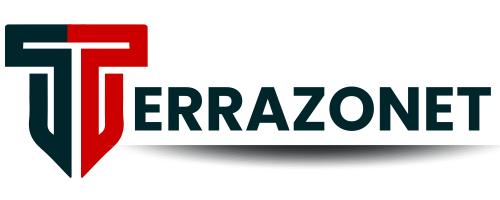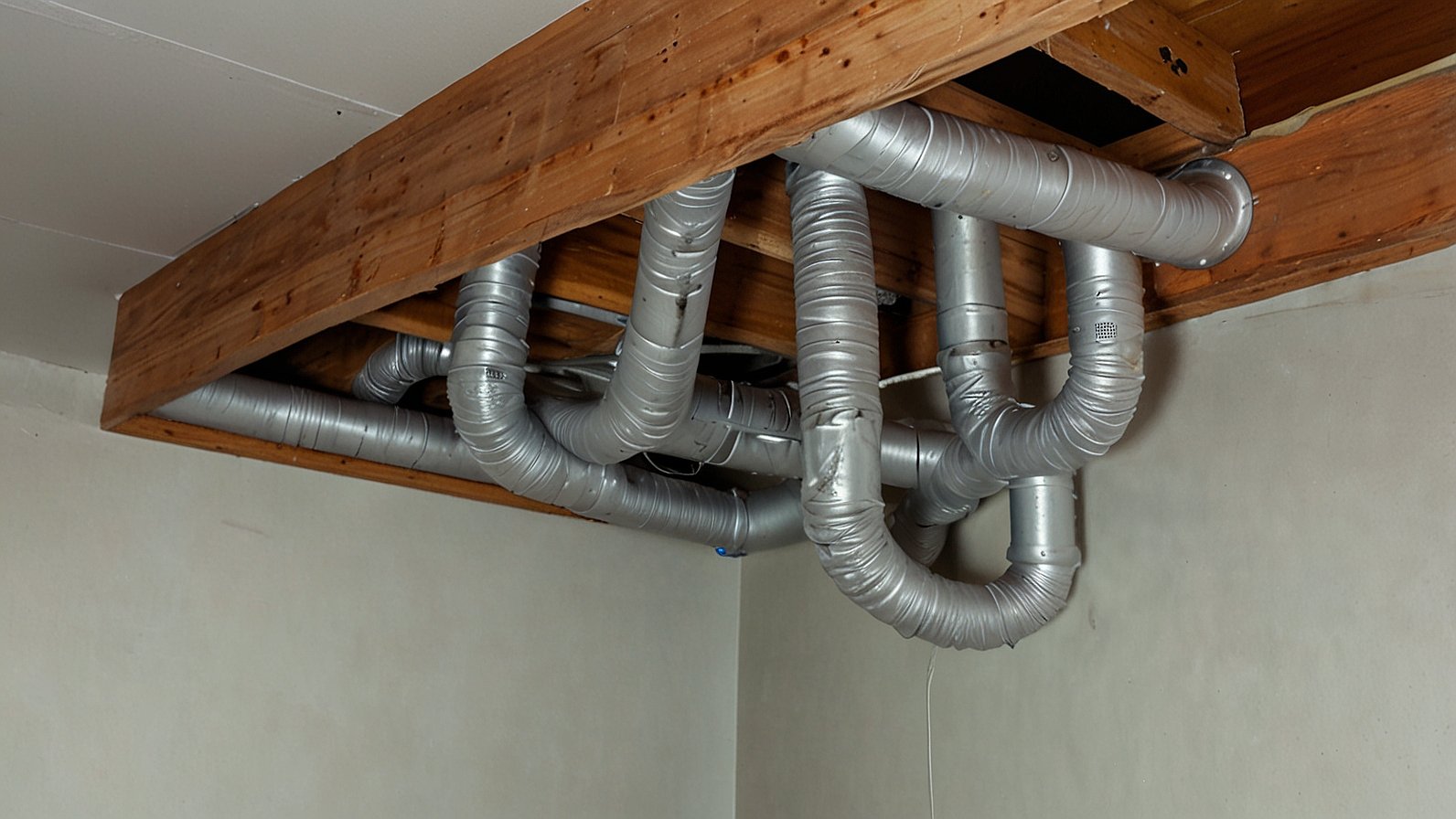Leaky ducts waste energy and money while making your home less comfortable. Fixing leaky ducts can reduce your energy bills by up to 20% and improve indoor air quality. Most homes lose 20-30% of heated or cooled air through ductwork leaks, but you can solve this problem with the right knowledge and tools.
Common Signs Your Ducts Need Attention
| Problem Sign | What It Means | Energy Impact |
| Uneven room temperatures | Air escaping before reaching rooms | 15-25% energy loss |
| High energy bills | System working harder than needed | 20-30% waste |
| Dusty rooms | Outside air entering ducts | Poor air quality |
| Noisy HVAC system | Air pressure imbalances | Reduced efficiency |
| Weak airflow from vents | Leaks reducing air delivery | 10-20% loss |
Why Duct Leaks Happen
Ductwork develops leaks over time due to several factors. Age is the biggest culprit, as materials break down and connections loosen. Poor installation also creates weak spots that fail later.
Temperature changes cause ducts to expand and contract. This movement stresses joints and seams. Rodents and pests can damage ducts by chewing holes or nesting inside them. Even vibrations from the HVAC system gradually weaken connections.
Understanding these causes helps you spot problems early. Regular inspection prevents small leaks from becoming major issues.
Simple Ways to Find Duct Leaks
You don’t need special tools to start finding duct leaks. The easiest method is feeling for air movement around visible ducts. Run your hand along joints and connections while the system operates.
Visual inspection reveals obvious problems. Look for:
- Disconnected duct sections
- Torn or damaged insulation
- Rust or corrosion on metal ducts
- Flexible ducts that appear crushed or kinked
The tissue paper test works well for hidden leaks. Hold tissue near suspected leak areas while the system runs. Moving tissue indicates escaping air.
Smoke pencils or incense sticks make air leaks visible. The smoke will move toward leaks when the system pulls air in, or blow away when air escapes.
Professional Detection Methods
HVAC professionals use advanced tools for thorough duct testing. Duct blasters pressurize the entire duct system to measure total leakage. This equipment provides exact numbers about energy loss.
Thermal imaging cameras show temperature differences that reveal leaks. Cool spots on warm ducts indicate escaping conditioned air. These cameras work especially well in extreme weather.
Pressure testing involves sealing all vents and measuring how well the system holds air pressure. Significant pressure drops indicate major leaks that need immediate attention.
DIY Approaches to Fixing Leaky Ducts
Homeowners can handle many duct repairs safely. Mastic sealant works best for most leaks. This paste-like material stays flexible and creates long-lasting seals around joints and small holes.
Apply mastic with a brush or gloved hands. Clean the area first, then spread a thick layer over the leak. The sealant cures in about 24 hours and can last for decades.
Foil tape (not regular duct tape) seals smaller gaps effectively. Use UL-listed foil tape designed specifically for HVAC systems. Clean surfaces before applying tape for better adhesion.
For larger holes, use sheet metal patches with mastic. Cut metal slightly larger than the hole, apply mastic around the edges, and press firmly in place.
When to Call Professionals
Some ductwork problems require professional expertise. Hidden leaks in walls or crawl spaces need special equipment to locate and access. Attempting DIY repairs in these areas often causes more damage.
Major disconnections or crushed ducts need replacement rather than simple sealing. Professionals have the tools and experience to reconnect or replace damaged sections properly.
If fixing leaky ducts doesn’t improve your energy bills or comfort, the problem might be more complex. System imbalances or inadequate ductwork design require professional evaluation and solutions.
Cost vs. Benefits of Repairs
Fixing leaky ducts typically costs much less than the energy savings over time. Professional sealing costs $300-800 for most homes, while DIY materials cost under $100.
The average homeowner saves $200-400 annually after fixing leaky ducts. These savings continue for many years, making repairs highly cost-effective. Improved comfort and air quality provide additional value beyond energy savings.
Return on investment usually occurs within 1-2 years. After that, the energy savings go directly to your pocket. Many utility companies offer rebates for duct sealing, further reducing costs.
Prevention and Maintenance Tips
Regular maintenance prevents most duct problems. Annual inspections help catch small issues before they become expensive repairs. Check visible ducts every few months for obvious damage.
Keep ducts clean and unobstructed. Remove items stored against ductwork and ensure vents stay open. Change air filters regularly to reduce system strain and prevent dust buildup in ducts.
Schedule professional duct cleaning every 3-5 years. This service removes accumulated debris and identifies potential leak points. Clean ducts work more efficiently and last longer.
Impact on Indoor Air Quality
Leaky ducts don’t just waste energy – they also affect the air you breathe. Pressure imbalances can pull unconditioned air, dust, and pollutants into your home through small gaps and cracks.
This contaminated air bypasses your HVAC filter, reducing indoor air quality. Fixing leaky ducts helps maintain the clean, filtered air your system is designed to provide.
Humidity control also improves with sealed ducts. Leaks can introduce humid outdoor air in summer or dry air in winter, making your home less comfortable.
Frequently Asked Questions
How do I know if my ducts are leaking? Check for uneven temperatures between rooms, higher than normal energy bills, and excessive dust. You can also feel around visible duct joints for air movement while your system runs.
Can I use regular duct tape for fixing leaky ducts? No, regular duct tape actually performs poorly on ducts. Use mastic sealant or UL-listed foil tape designed for HVAC systems. These materials last much longer and seal more effectively.
How much money can I save by fixing leaky ducts? Most homeowners save 10-20% on energy bills after sealing duct leaks. This typically amounts to $200-400 per year, depending on your home size and energy costs.
Is fixing leaky ducts a DIY project? Simple repairs using mastic sealant or foil tape are DIY-friendly for accessible ducts. However, hidden leaks or major damage require professional tools and expertise.
How often should I check my ducts for leaks? Inspect visible ducts every few months and have professional testing done every 3-5 years. Address any obvious problems immediately to prevent energy waste and maintain comfort.
You May Also Read: What Every First-Time Homebuyer Should Know: Tips for a Smoother Journey



















